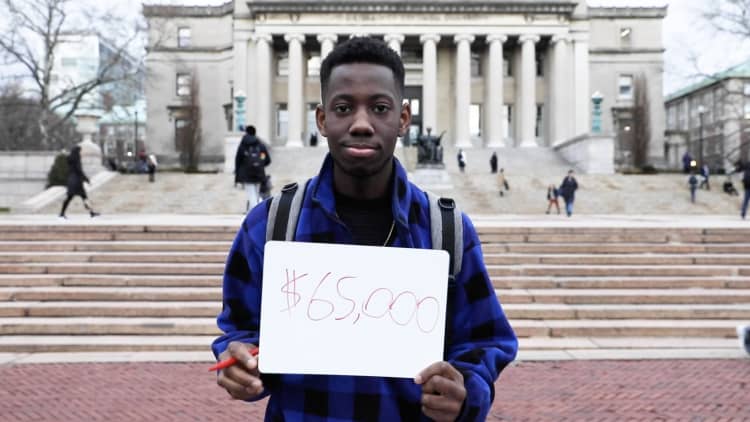The highly anticipated update on student loans is here: The Biden administration announced Wednesday it will forgive up to $10,000 in federal student loans for individuals making less than $125,000 a year or married couples or heads of household making less than $250,000 a year, and up to $20,000 for Pell Grant recipients who meet the same income requirements.
The pause on student loan repayment, interest and collections will be extended "one final time" through Dec. 31.
Additionally, the Department of Education proposed a new income-driven repayment plan that could cut monthly payments in half for undergraduate loans, deliver forgiveness for some borrowers 10 years sooner, and make it easier to enroll in such payment plans.
How the repayment plan would work
Capping monthly payments
First, the program would cap monthly payments on undergraduate federal loans to 5% of a borrower's discretionary income, down from the typical 10%. Borrowers with both undergraduate and graduate loans will pay a weighted average rate.
The White House expects the average annual student loan payment will be lowered by more than $1,000 for current and future borrowers.
Increasing threshold for non-discretionary income
The plan would also increase the threshold of what's considered non-discretionary income that's protected from repayment. The White House says this will guarantee anyone earning below the annual equivalent of a $15 minimum wage will not have to make a monthly payment.
The White House gives the following example of how monthly payments would shrink under the proposed changes: A typical single public school teacher with an undergraduate degree, making $44,000 a year, would pay only $56 a month on their loans, compared to the $197 they pay now under the most recent income-driven repayment plan. This would add up to an annual savings of nearly $1,700.
Covering unpaid monthly interest
The plan would cover a borrower's unpaid monthly interest as long as they make a monthly payment. This ensures "no borrower's loan balance will grow as long as they make their monthly payments," the White House said. Borrowers making a monthly payment of $0 due to unemployment or low income will also be covered.
Forgiving some loan balances earlier
And finally, the proposed plan would forgive loan balances after 10 years of payments, instead of the usual 20 years, for those with original loan balances of $12,000 or less. The Department of Education estimates this will allow nearly all community college borrowers to be debt-free within 10 years.
Existing income-driven repayment is 'too complex and too limited'
The Department of Education provides four types of income-driven repayment plans, which cap monthly payments based on the borrower's income and household size.
These types of repayment plans have existed for some time, but "existing versions of these plans are too complex and too limited," the White House said. "As a result, millions of borrowers who might benefit from them do not sign up, and the millions who do sign up are still often left with unmanageable monthly payments."
It expects the proposed changes will "substantially reduce future monthly payments for lower- and middle-income borrowers."
The plan will also make it easier for borrowers to enroll starting in summer 2023. Borrowers will be able to let the Department of Education automatically pull their income information, rather than having to recertify each year.
The draft rule will be published on the Federal Register in the coming days and open to public comment for 30 days afterward.
Check out: Biden announces $10,000 student loan forgiveness plan–here's who qualifies
Sign up now: Get smarter about your money and career with our weekly newsletter



